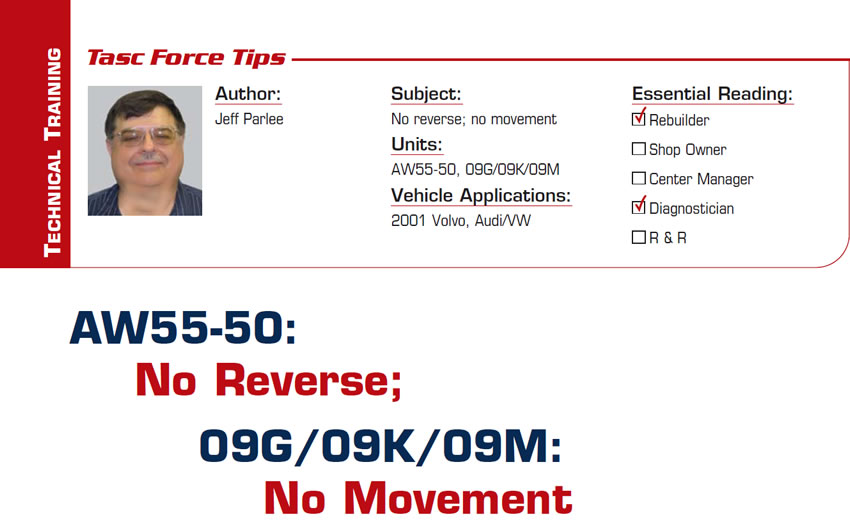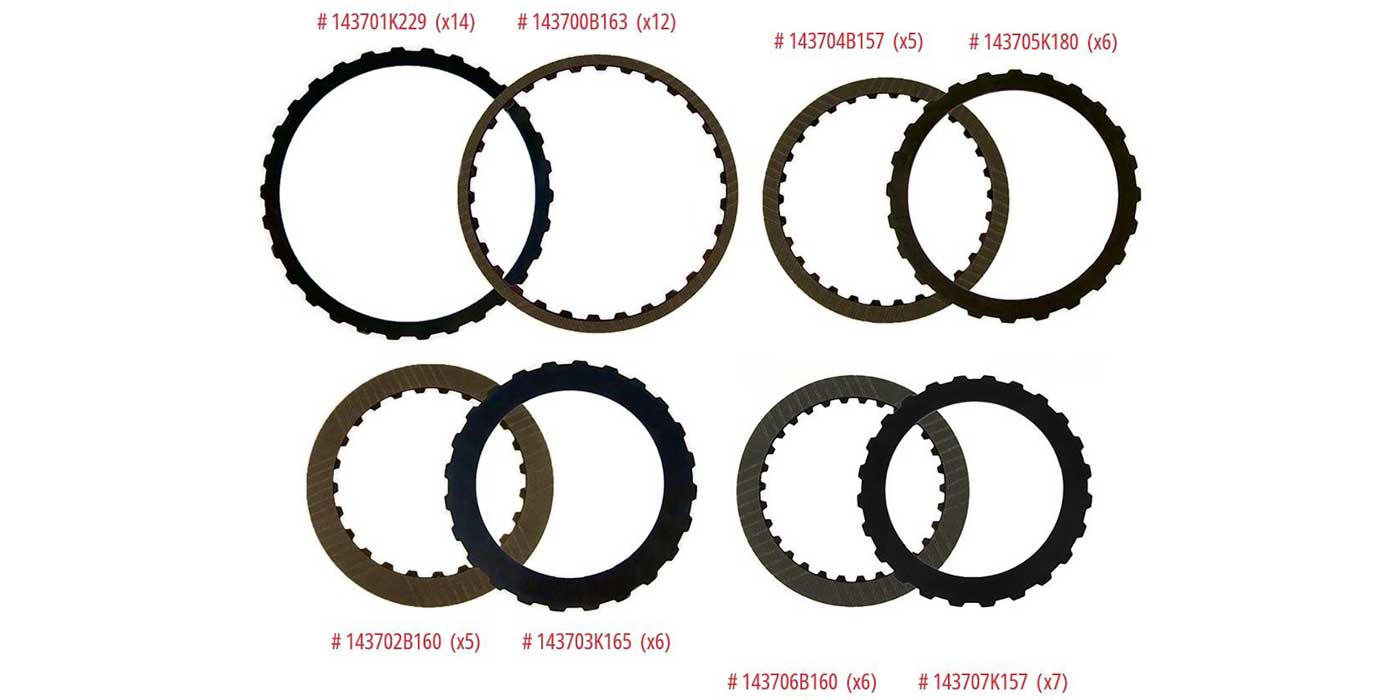
TASC Force Tips
- Subject: No reverse; no movement
- Units: AW55-50, 09G/09K/09M
- Vehicle Applications: 2001 Volvo, Audi/VW
- Essential Reading: Rebuilder, Diagnostician
- Author: Jeff Parlee
I recently received a phone call from a shop that was working on a 2001 Volvo with an AW 55-50 transmission. The vehicle would not move when shifted from Park to Reverse. If the selector was first put into Drive then moved to Reverse, engagement was normal. The manual linkage was checked, confirming that the manual valve was in the reverse position.
My first thought was “KM no-reverse syndrome,” so I asked whether it was possible to swap the connectors on the turbine-speed sensor and the output-speed sensor. The technician said he would try the connectors and call back. Sure enough, after he swapped the connectors, the car now had reverse whenever it was selected.
For those who do not know what “KM no-reverse syndrome” is, here is the explanation. The KM transaxle had two speed sensors (pulse generators) that plugged into two holes in the case or, on other models, one hole in the case and one hole in the end cover. One sensor was for output speed and the other was for turbine speed. The two sensors were wired directly to a common connector.
There was enough wire to plug the common connector into the main harness with the sensors installed in the wrong holes.
The KM transmission control module (TCM) would inhibit reverse if it saw output speed. When the sensors were installed incorrectly, the output-speed sensor would be reading the speed of the turbine shaft, which is normally spinning at about engine speed in park. The TCM sees output speed and does not allow a reverse engagement. When the selector is put into drive while the vehicle is stationary, all the components in the transaxle come to a stop. If reverse is then selected, the TCM does not see any output speed and reverse will be allowed to engage. Most vehicles on the road today will have a reverse-inhibit feature to protect the transmission and drivetrain. Not all will have the turbine-speed sensor and output-speed sensor close enough to swap the locations.
The 09G, 09K and 09M transaxles in Audi and Volkswagen have a unique feature that will show up in your shop sooner or later. Almost everyone knows that the brake pedal must be depressed to move the shifter from park. The new feature is that the brake pedal must remain depressed until the desired gear has been selected. If the brake pedal is released before the desired gear is selected the PRNDL lights will flash, the transmission will remain in neutral and engine speed may fluctuate. Depressing the brake pedal will turn off the flashing PRNDL and allow the transmission to engage. This is a normal condition; no repair is needed. Advise the driver to keep the brake pedal depressed until the transmission has engaged.
This information is available from VW bulletin # 34 06 04 dated Aug. 17, 2006, or Audi bulletin # 34 09 02 dated Feb. 3, 2009.

Jeff Parlee is director of product support at Valve Body Xpress and a member of the Sonnax TASC Force (Technical Automotive Specialties Committee), a group of recognized industry technical specialists, transmission rebuilders and Sonnax Industries Inc. technicians.
©2010 Sonnax Industries













